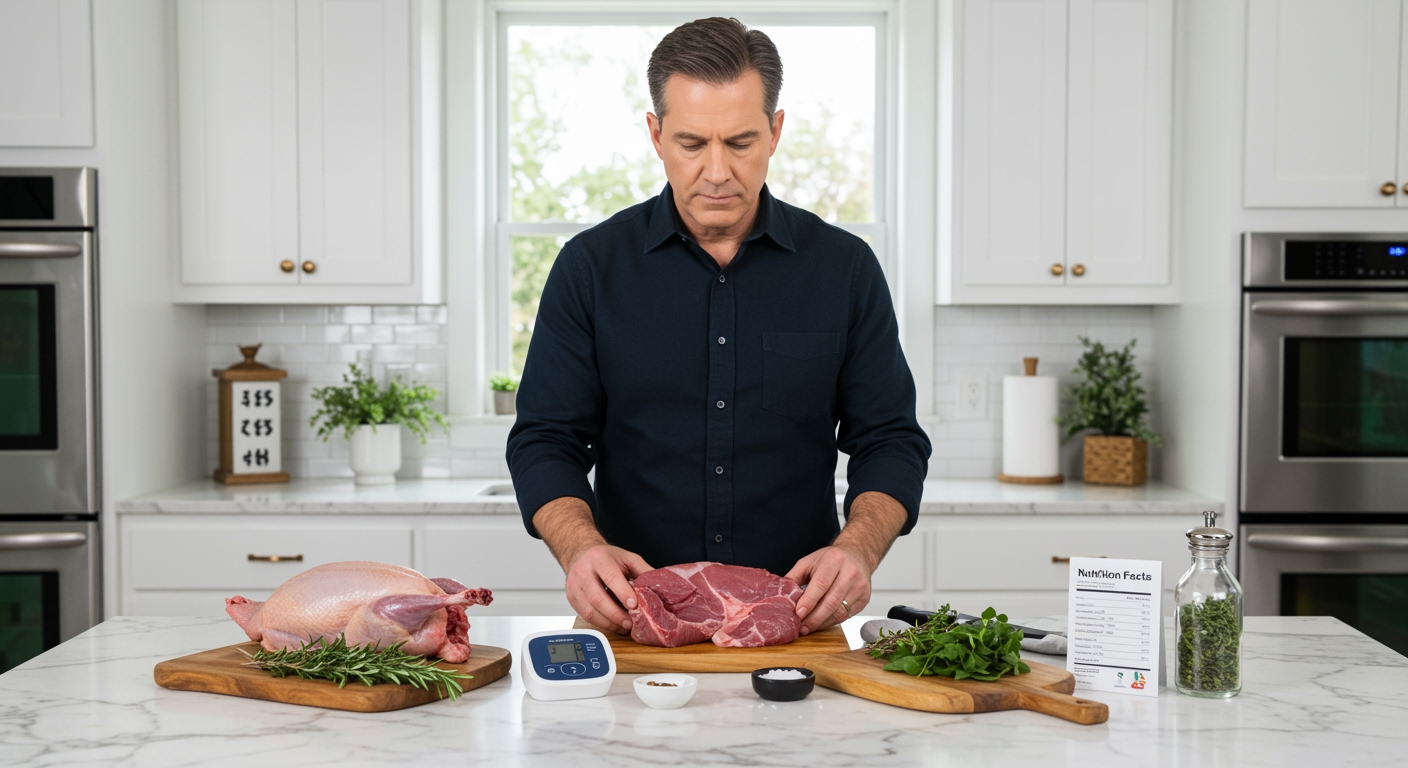✪ Key Takeaway: Pheasant meat is safe for hypertensive patients when prepared without added salt and consumed in moderate portions.
Introduction
Your doctor just told you to watch your blood pressure, and now you are staring at your dinner plate wondering what you can actually eat.
You might be asking this question because game meats like pheasant seem exotic and potentially risky for someone managing hypertension.
Hi, I am Abdur, your nutrition coach, and today I am going to explain whether pheasant meat is a safe choice for people with high blood pressure.
What Makes Pheasant Different From Regular Poultry?
Pheasant meat stands apart from chicken and turkey in several important ways that matter for your blood pressure.
This wild game bird contains significantly less sodium than farm-raised poultry because it lives in natural environments without processed feed.
The protein content in pheasant reaches about 24 grams per 100-gram serving, which is higher than most conventional poultry options.
Pheasant meat also provides lean muscle tissue with minimal fat content, typically containing only 2-3 grams of fat per serving.
The mineral profile includes potassium, magnesium, and phosphorus, which work together to support healthy blood vessel function.
✪ Fact: Wild pheasant contains 40% less sodium than commercially raised chicken due to its natural diet and lifestyle.
How Does Pheasant Affect Your Blood Pressure?
The relationship between pheasant meat and blood pressure involves several key nutritional factors that work in your favor.
Low sodium content means your kidneys do not have to work overtime to filter excess salt from your bloodstream.
When your kidneys process less sodium, they retain less water, which reduces the volume of blood your heart must pump.
The high potassium levels in pheasant meat help counteract sodium effects by relaxing blood vessel walls and improving circulation.
Potassium works as a natural vasodilator, meaning it helps your blood vessels expand and reduces pressure on arterial walls.
The lean protein structure requires minimal digestive energy, preventing post-meal blood pressure spikes that often occur with fatty meats.
Magnesium content in pheasant supports smooth muscle relaxation in blood vessels, contributing to better pressure regulation throughout your cardiovascular system.
✪ Pro Tip: Eat pheasant with potassium-rich vegetables like spinach or broccoli to maximize blood pressure benefits.
What Are The Potential Risks For Hypertensive Patients?
While pheasant meat offers many benefits, certain preparation methods and consumption patterns can create problems for people with high blood pressure.
Salt-heavy marinades and seasonings can quickly transform this low-sodium protein into a high-sodium meal that spikes your blood pressure.
Many hunters and restaurants use salt-based brines or curing methods that add hundreds of milligrams of sodium per serving.
Portion size becomes critical because even healthy proteins can stress your cardiovascular system when consumed in excessive amounts.
Large protein meals require increased blood flow to digestive organs, temporarily raising blood pressure for 2-3 hours after eating.
Cooking methods like deep frying or heavy butter-based preparations add saturated fats that can worsen hypertension over time.
Some people experience allergic reactions to game meats, which can cause inflammation and temporary blood pressure elevation in sensitive individuals.
✪ Note: Always check your blood pressure 2-3 hours after trying pheasant for the first time to monitor your individual response.
How Should You Prepare Pheasant For Blood Pressure Management?
The way you prepare pheasant meat determines whether it helps or hurts your blood pressure management goals.
Herb-based seasonings like rosemary, thyme, and garlic provide flavor without adding sodium while offering additional cardiovascular benefits.
These herbs contain compounds that naturally support blood vessel health and may help lower blood pressure independently.
Grilling or roasting methods allow excess fat to drain away while preserving the meat’s natural flavor and nutritional value.
Avoid breading or battering, which adds refined carbohydrates that can cause blood sugar spikes and secondary blood pressure increases.
Lemon juice and vinegar-based marinades tenderize the meat naturally while adding potassium and avoiding sodium completely.
Keep serving sizes to 3-4 ounces per meal, roughly the size of your palm, to prevent digestive stress that can temporarily raise blood pressure.
✪ Pro Tip: Marinate pheasant in olive oil and herbs for 2-4 hours to enhance flavor without compromising your blood pressure goals.
The Bottom Line
Pheasant meat is not only safe for hypertensive patients but can actually support better blood pressure management when prepared correctly.
The best foods for your health are often the ones that come closest to their natural state, and pheasant meat exemplifies this principle perfectly.
I would love to hear about your experience with game meats or any questions you have about managing blood pressure through nutrition in the comments below.
References
At NutritionCrown, we use quality and credible sources to ensure our content is accurate and trustworthy. Below are the sources referenced in creating this article:
- PMC: Nutritional and Health Benefits of Game Meat
- UH Hospitals: Pheasant Leg Meat Nutritional Facts
- PMC: Dietary Protein and Blood Pressure Management
- Nutrition Value: Pheasant Meat Nutritional Value
- Wild Harvest Table: Pheasant Nutritional Information





